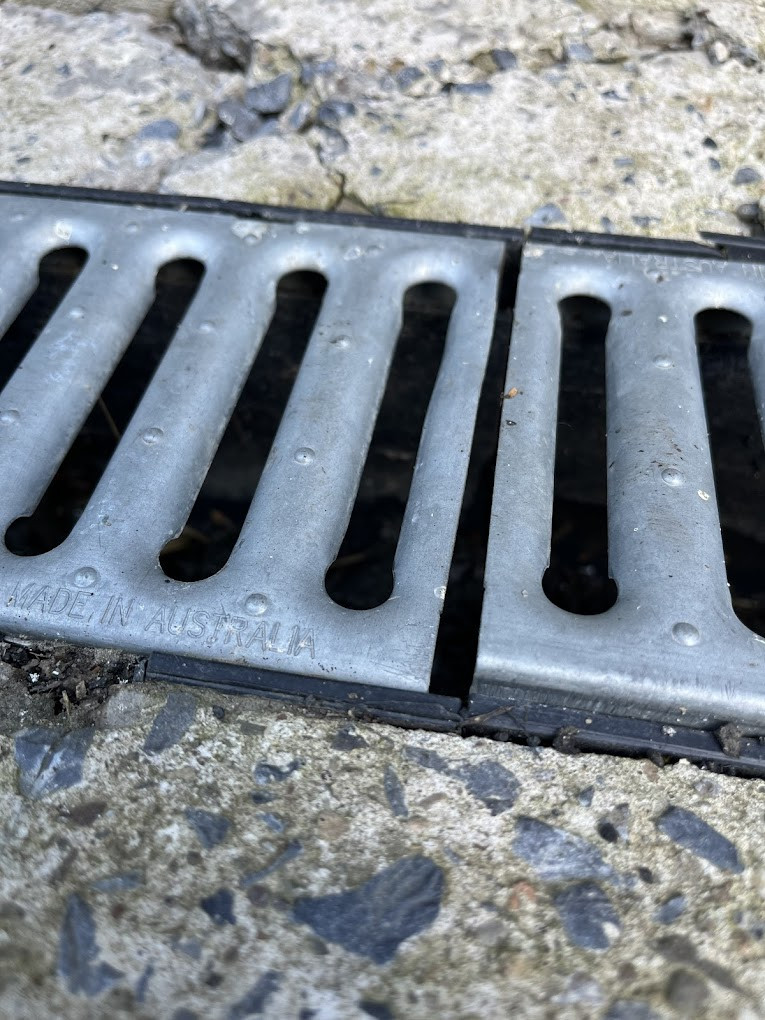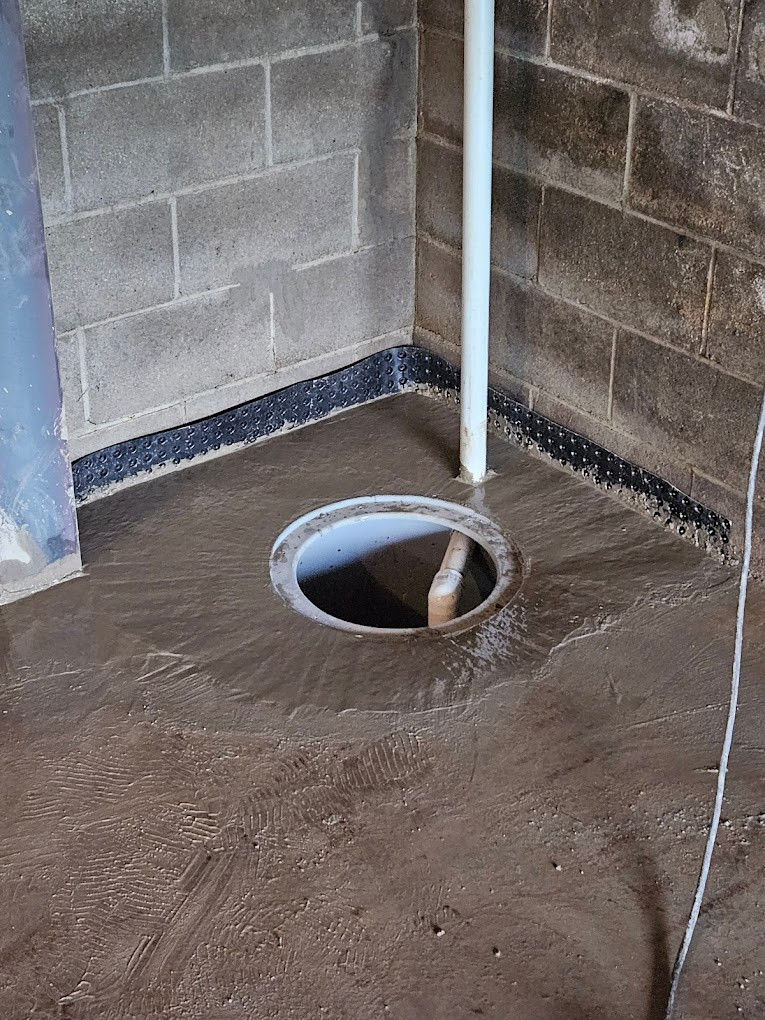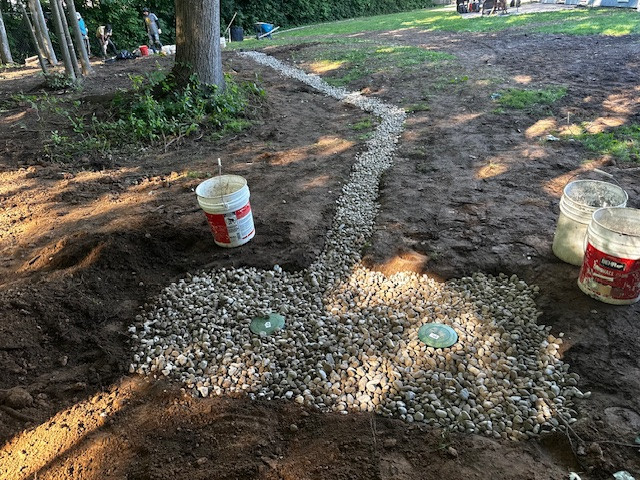Have you ever considered the importance of a well-planned drainage system for your basement? It’s not just about preventing water from seeping in, but also about maintaining the structural integrity of your house. With a myriad of options like interior sump pumps, exterior French drains, or even hybrid systems, you’re left wondering which one will best suit your needs. But how do you decide? Let’s explore these solutions further and discover how to keep your basement dry and your home safe from the potential damage of improper drainage.
Key Takeaways
- There are various types of basement drainage systems, including interior, exterior, sump pump systems, gravity systems, and French drains.
- Interior drainage systems, such as sump pumps and interior French drains, manage moisture and prevent water damage within the basement.
- Exterior drainage solutions, including grading techniques and surface drainage systems, divert water away from the foundation to prevent seepage.
- Hybrid drainage systems combine interior and exterior strategies for increased efficiency and adaptability to different groundwater levels and soil types.
- Regular maintenance, including cleaning, sump pump care, and seasonal inspections, is crucial for the longevity and efficiency of any basement drainage system.
Understanding Basement Drainage Basics
Drainage is an essential aspect of any basement setup. It’s your first line of defense against water damage, and it’s crucial you understand the basics.
Firstly, let’s talk about water flow. The goal is to direct water away from your home’s foundation. This involves a well-designed slope for effective water runoff, and the use of drainage pipes to channel water away from the basement.
Now, let’s discuss sump pumps. They’re a key component of your basement drainage system. When water levels rise, the sump pump kicks into action, pumping water out of the basement and away from your home. It’s your safeguard against flooding and dampness, and it’s vital to maintaining a dry, mold-free basement.
You’ll also want to consider the type of soil surrounding your home. Some types absorb water better than others, affecting how well your drainage system works. Clay soils, for instance, are less permeable and can lead to water pooling around your foundation.
Don’t underestimate the importance of a well-designed and properly functioning basement drainage system – it’s a crucial part of maintaining your home’s health.
The Importance of Proper Drainage
Without a doubt, ensuring proper drainage in your basement is crucial for the long-term structural integrity of your home.
It’s not just about avoiding water damage, but also about maintaining foundation stability. Soil saturation, caused by improper landscape grading or inadequate drainage systems, can severely undermine your home’s foundation.
Many drainage myths may lead you astray. For instance, the belief that all water problems can be solved by a sump pump.
While useful, it’s often only a part of the solution, not the whole answer. A combination of waterproofing techniques and a well-designed drainage system can more effectively protect your basement against moisture intrusion.
Remember, each city has its drainage regulations.
They’re not just bureaucratic red tape, but rules designed to protect your home and your community’s overall infrastructure. Ignoring them not only risks penalties but also exacerbates potential water damage.
Interior Basement Drainage Systems
When it comes to ensuring your basement remains dry and your home’s foundation stays secure, interior basement drainage systems play a pivotal role. These systems are a crucial part of water management in your home, reducing basement humidity and preventing water damage.
You have several options for interior basement systems, including sump pumps, waterproof membranes, drainage tiles, interior French drains, and moisture barriers. Sump pumps redirect water away from your house, while waterproof membranes and drainage tiles work together to collect and channel water away from the foundation. Interior French drains are trenches filled with gravel that serve the same purpose. Moisture barriers, usually plastic or foil sheets, are used to prevent moisture from penetrating your walls. Foundation sealing, although an exterior measure, complements these interior systems and further ensures a dry basement.
| System | Function |
|---|---|
| Sump Pumps | Redirect water |
| Waterproof Membranes | Prevent water penetration |
| Drainage Tiles | Collect and channel water |
| Interior French Drains | Direct water away from foundation |
| Moisture Barriers | Block moisture from walls |
Exterior Basement Drainage Options
A myriad of exterior drainage options exist to safeguard your basement from water damage and secure your home’s foundation. You can consider grading techniques and landscape grading as first lines of defense. By sloping the ground away from your home’s foundation, you’ll guide water away before it infiltrates your basement.
Surface drainage systems, including drainage trenches and downspout extensions, are also effective strategies. These systems divert water from your home, reducing the pressure on your basement walls.
French drains are another excellent option. Installed around your home’s perimeter, these drains collect water before it reaches your basement, redirecting it away from your home.
If you’re battling a high water table or heavy rains, sump pumps can be your saving grace. These devices pump out excess water that accumulates in a specially designed sump pit.
Lastly, don’t underestimate the power of waterproof membranes. Applied to the exterior of your basement walls, these membranes form a water-resistant barrier, keeping your basement dry and intact.
Each option has its benefits and drawbacks, so it’s essential to assess your property’s unique needs and conditions before choosing the best fit.
Hybrid Drainage Systems Explained
You might be wondering, “What’s a hybrid drainage system?” In essence, it’s an innovative solution combining both interior and exterior drainage strategies. This combination ups the ante in terms of drainage efficiency, providing a robust solution for your basement’s water problems.
Hybrid solutions are specially designed to tackle more complex drainage issues that can’t be resolved by a single system. They utilize the best aspects of both interior and exterior systems, ensuring optimal performance regardless of the weather conditions or the level of groundwater.
Key features of hybrid systems include:
- Dual-action drainage: Hybrid systems offer double the protection, draining water from both inside and outside your basement.
- Increased efficiency: By integrating two systems, hybrid solutions maximize drainage efficiency, keeping your basement dry even during heavy rainfall.
- Versatility: Hybrid systems adapt to varying groundwater levels and soil types, making them suitable for a wide range of properties.
In short, a hybrid drainage system is a comprehensive solution to your basement’s drainage needs. It brings together the strengths of both interior and exterior systems, providing unparalleled protection against water damage.
Choosing Your Ideal Drainage Solution
As you consider your basement’s drainage needs, it’s crucial to carefully evaluate all available options.
From French drains to sump pumps, each solution has its own unique benefits and potential drawbacks.
Once you’ve identified the most suitable system, understanding the specifics of its installation will ensure optimal performance and longevity.
Evaluating Drainage Options
Numerous options exist for basement drainage systems, each with its own set of pros and cons. When evaluating these options, you’ll want to consider factors like flood prevention, water management, and soil grading.
Firstly, let’s tackle flood prevention. Does the system effectively divert water away from the foundation? This is critical in preventing basement flooding. You should consider the landscape design and how it affects water flow.
Next, consider water management. Does the system include a reliable sump pump? This device plays a key role in pumping out excess water and maintaining a dry basement.
Finally, consider the importance of soil grading. Proper grading ensures water flows away from your house, not towards it.
Here’s a quick rundown of other factors to consider:
- Drainage materials: The type of material used in your system can greatly affect its efficiency and durability. PVC, for instance, is a popular choice due to its longevity.
- Pipe sizing: The size of the pipes used can affect how much water the system can handle at a time.
- Waterproofing techniques: Effective basement waterproofing can significantly boost the performance of your drainage system.
Choose wisely, as the right drainage system is crucial for the long-term health of your basement.
Drainage Solution Installation
After weighing all the factors and determining the best option for your basement, the next step is implementing your chosen drainage solution.
It’s crucial to understand the various drainage system types and their respective installation techniques.
If you’ve chosen an interior drainage system, it’s typically installed along the perimeter of your basement floor. The process involves removing a section of your floor, laying down the pipe, and then covering it back up with concrete. This system collects water that seeps in and directs it away from your basement.
For those opting for an exterior system, it’s more extensive and involves excavating around your home to install the drain pipe. This method aims to prevent water from ever reaching your basement walls.
Sump pump systems, on the other hand, involve installing a pump inside a pit dug at the lowest point of your basement. When water fills the pit, the pump activates and discharges the water outside.
Each system has its own unique installation techniques, so it’s essential to hire a professional who’s experienced with your chosen system.
Maintenance Tips for Your Drainage System
Keeping your basement’s drainage system in top shape doesn’t need to be a complex task. Regular seasonal maintenance checks can help you spot common drainage issues early. This not only saves you from potential water damage, but it also reduces the need for expensive drainage system upgrades.
Here are some DIY maintenance tips:
- Regularly clean your drainage system using appropriate drainage cleaning techniques. This keeps the system free from blockages.
- Take care of your sump pump, especially during rainy seasons. Check for any mechanical issues and ensure it’s working efficiently.
- Consider waterproofing strategies to prevent moisture seepage into your basement.
Professional inspections can also be beneficial. Experts can identify and rectify problems you might miss, ensuring the longevity of your system.
Frequently Asked Questions
What Costs Are Typically Associated With Installing a Basement Drainage System?
Installing a basement drainage system can be a significant investment.
You’ll have to consider installation costs which typically range from $2,000 to $6,000. This can vary depending on the complexity of the system.

Also, don’t forget about maintenance expenses. These can include routine inspections and cleaning, helping to ensure your system remains effective.
Can I Install a Drainage System in an Already Finished Basement?
Absolutely, you can install a drainage system in a finished basement.
However, it’s not without its challenges. You’ll need to consider the existing layout and materials.
You might’ve to remove and replace some elements, which could add to the cost.
It’s best to consult a professional to assess the situation, provide options, and give an estimate.
How Do Weather Conditions Affect the Effectiveness of Basement Drainage Systems?
Weather conditions significantly impact your basement’s drainage performance. Heavy rainfall can overload systems, leading to backup or flooding.
Conversely, drought conditions can cause soil contraction, potentially damaging the system. It’s crucial to monitor weather patterns and adjust your system accordingly.
Cold weather can also pose problems, as pipes may freeze if not properly insulated.
Are There Eco-Friendly Drainage System Options for Basements?
Yes, there are eco-friendly options for basement drainage systems.
You can opt for systems made from sustainable materials, which don’t deplete natural resources.
Another great option’s rainwater harvesting, where you collect rainwater, store it, and use it later.
It’s not only eco-friendly but can significantly reduce your water bills.
However, it’s important to consider your local climate and rainfall patterns when choosing this option.
What Signs Indicate That My Current Basement Drainage System Isnt Working Properly?
You’ll know your basement drainage system isn’t functioning properly if you notice these signs.
Visible water pooling, damp walls or floors, and a musty smell can all signal drainage failures. Using moisture detection tools can confirm these suspicions.
Persistent wetness, mold growth, and efflorescence (white, chalky substance) on your walls are also indicators.
Don’t ignore these signs, as they can lead to more serious issues like structural damage to your home.
Choosing the right drainage system for your basement isn’t just beneficial—it’s essential. Whether you opt for interior systems like sump pumps, exterior solutions like French drains, or hybrid systems, your choice can protect your home from water damage. But remember, regular maintenance is key. By understanding and managing your system effectively, you ensure its longevity and safeguard your basement from the threats of water intrusion and flooding.





